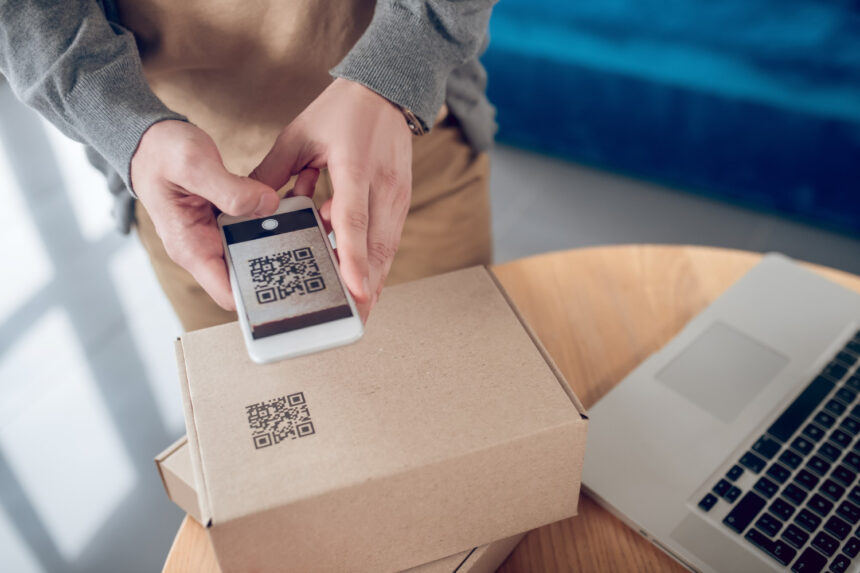Barcodes are a crucial tool for businesses in various industries. They simplify inventory management and enhance the efficiency of sales transactions. A barcode generator allows individuals and companies to create customized barcodes for their specific needs, making it easy to streamline operations.
Today’s barcode generator offer a wide range of options, from traditional 1D barcodes to more complex 2D codes. Users can choose from different symbologies like UPC, EAN, and QR codes, ensuring they find the right type for their application. This flexibility makes barcode generators an essential resource for anyone looking to improve their labeling systems.
With numerous free online tools available, generating barcodes has never been easier. Users can quickly create high-quality barcodes that are printable and scannable. This accessibility empowers businesses to manage their products efficiently without needing advanced technical skills or software.
Understanding Barcodes
Barcodes are essential tools for tracking and managing products in various industries. They have evolved over time, leading to the development of various standards that enhance their functionality and compatibility.
Evolution of Barcodes
Barcodes originated in the 1940s. The initial idea was to create a system to efficiently track inventory. The first barcode was a simple pattern, resembling a series of lines. This early model faced many limitations.
The breakthrough came in the 1970s with the introduction of the Universal Product Code (UPC). The UPC became widely adopted in retail, allowing for faster checkout processes. Since then, other formats like QR codes and Data Matrix codes have emerged. These newer types can store more information and are useful in various applications, including marketing.
Barcodes have continued to adapt. They now incorporate advanced technologies, allowing for integration with mobile devices and cloud services. This evolution ensures businesses can keep up with demands for efficiency and accuracy.
Common Barcode Standards
Several barcode standards exist, each designed for specific uses. The most common types include:
- UPC (Universal Product Code): Widely used in retail, UPC codes typically contain 12 digits for identifying products.
- EAN (European Article Number): Similar to UPC, EAN is commonly used in Europe and can support 13-digit codes.
- Code 39: This alphanumeric code is often used in non-retail settings, like warehouses.
- QR Codes: Quick Response codes can store a large amount of information and can be scanned using smartphones.
These standards have specific applications, and understanding them is vital for businesses. They help ensure accurate scanning, improve inventory management, and enhance customer experience. As technology progresses, keeping up with barcode standards is essential for success and efficiency in any industry.
Creating Barcodes
Barcodes are essential for inventory management, product tracking, and pricing. There are several methods to create barcodes, each with unique features and benefits. This section covers barcode generation software, online generators, and custom solutions.
Barcode Generation Software
Barcode generation software allows users to create barcodes on their computers. These programs typically offer various types of barcodes, including UPC, Code 39, and QR codes. Users can customize barcodes by adding specific data, adjusting size, and choosing different formats.
Benefits of using barcode software:
- Batch processing: Users can generate multiple barcodes at once, saving time.
- Integration: Many software options integrate with existing inventory systems or databases.
- Offline access: Once installed, software can work without internet access.
Popular options include Barcode Studio and Labeljoy, which provide user-friendly interfaces and extensive customization options.
Online Barcode Generators
Online barcode generators are accessible tools for creating barcodes directly in a web browser. These platforms often allow users to generate various barcode types without needing to install software. Users simply input the necessary information and download the generated barcode.
Key features of online generators:
- Cost-effective: Many online tools are free or have minimal fees.
- No installation required: Users can access them from any device with an internet connection.
- Quick results: Generating a barcode takes just a few minutes.
Some popular online options include TEC-IT, Barcode Generator by Cognex, and BarcodeFactory, each providing various customization features.
Custom Barcode Solutions
For businesses with specific needs, custom barcode solutions are available. These services often include specialized barcode design and integration tailored to a company’s unique requirements. Custom solutions can incorporate features like logo placement, unique colors, or specific data formats.
Important aspects of custom solutions:
- Personalization: Tailoring barcodes to fit branding or operational needs.
- Expert support: Professional guidance helps ensure efficiency and accuracy.
- Scalability: Solutions can grow alongside the business and its changing needs.
Companies seeking custom barcode solutions may work with specialized firms that handle everything from design to printing.
Barcode Generation Techniques
Barcode generation involves different methods tailored to specific needs. Understanding these techniques helps in selecting the most suitable approach for a given application.
Linear vs 2D Barcodes
Linear barcodes, such as UPC and Code 39, represent data in one-dimensional formats. They use varying widths of parallel lines and spaces to encode information. These barcodes are best for simple data, such as product identifiers and inventory tracking.
In contrast, 2D barcodes, like QR codes and DataMatrix, can store more information due to their two-dimensional structure. They use patterns of squares or dots arranged on a grid. This allows for encoding URLs, contact details, or even small amounts of text. 2D barcodes are more versatile and can be scanned by smartphones, making them popular in marketing and ticketing environments.
Error Correction Methods
Error correction is crucial in barcode generation to ensure data accuracy. Various methods are employed depending on the barcode type.
For linear barcodes, simple checksums can catch errors by ensuring that the data scanned matches what’s encoded. If an error occurs, users can retrace steps to fix the issue.
Two-dimensional barcodes use more advanced error correction techniques, such as Reed-Solomon coding. This method allows a barcode to be read accurately even if parts of it are damaged or obscured.
The amount of error correction applied varies. Higher levels increase data reliability but may reduce how much information can be stored. Balancing these factors is important in barcode design.
Integrating Barcodes into Systems
Barcodes can enhance many systems by improving accuracy and efficiency. Their integration requires careful planning, especially in databases, inventory management, and point of sale systems. Each area has specific requirements and benefits.
Database Linkage
Linking barcodes with databases allows automatic data capture and retrieval. When a barcode is scanned, the system can quickly pull relevant information from the database.
- Data Accuracy: With barcodes linked to databases, errors in data entry are minimized.
- Real-Time Updates: Changes in inventory or pricing can be instantly updated across all systems.
Custom APIs often facilitate this connection, ensuring seamless data flow. This setup is vital for industries that rely on real-time information, such as retail and logistics.
Inventory Management Integration
Integrating barcodes into inventory management systems enhances tracking and organization. Barcodes simplify the identification of products and their quantities.
- Efficient Stock Control: Staff can scan items to update stock levels automatically. This reduces manual counting errors.
- Quick Audits: Inventory audits become quicker with barcode scanning, enhancing accuracy and speed.
Many inventory management tools support barcode features. This integration helps businesses maintain optimal stock levels and minimize losses.
Point of Sale Systems
Barcodes are crucial in point of sale (POS) systems, speeding up transactions and reducing wait times. When customers check out, their items can be scanned quickly.
Benefits include:
- Faster Transactions: Scanning items reduces the time spent on entering prices manually.
- Consistent Pricing: Price changes are instantly reflected in the system when linked to the inventory database.
Most modern POS systems already include barcode scanning capabilities. This feature makes the purchase process smoother for both customers and retailers.




